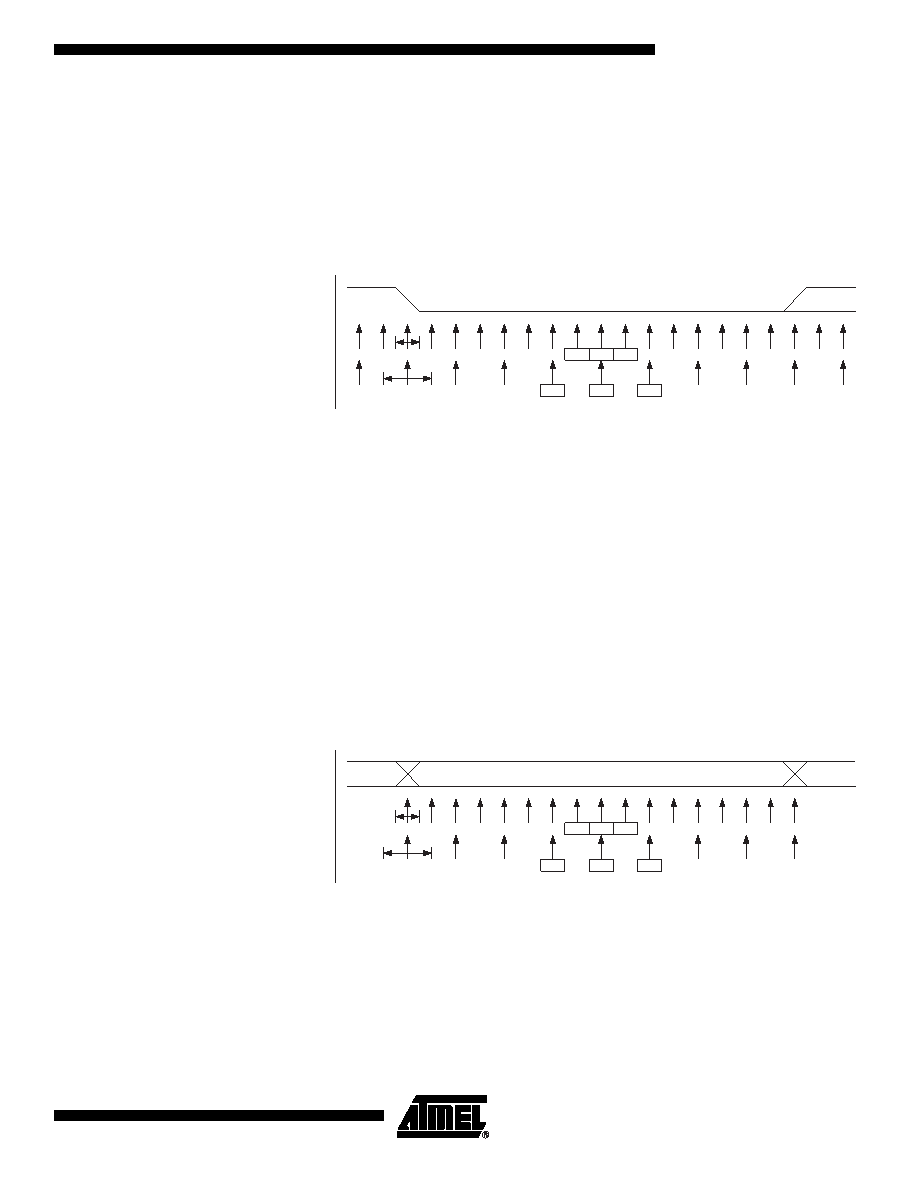- 您現(xiàn)在的位置:買賣IC網(wǎng) > PDF目錄25642 > MD80C52XXX-12P883D (TEMIC SEMICONDUCTORS) 8-BIT, MROM, 12 MHz, MICROCONTROLLER, CDIP40 PDF資料下載
參數(shù)資料
| 型號: | MD80C52XXX-12P883D |
| 廠商: | TEMIC SEMICONDUCTORS |
| 元件分類: | 微控制器/微處理器 |
| 英文描述: | 8-BIT, MROM, 12 MHz, MICROCONTROLLER, CDIP40 |
| 文件頁數(shù): | 56/257頁 |
| 文件大小: | 1840K |
| 代理商: | MD80C52XXX-12P883D |
第1頁第2頁第3頁第4頁第5頁第6頁第7頁第8頁第9頁第10頁第11頁第12頁第13頁第14頁第15頁第16頁第17頁第18頁第19頁第20頁第21頁第22頁第23頁第24頁第25頁第26頁第27頁第28頁第29頁第30頁第31頁第32頁第33頁第34頁第35頁第36頁第37頁第38頁第39頁第40頁第41頁第42頁第43頁第44頁第45頁第46頁第47頁第48頁第49頁第50頁第51頁第52頁第53頁第54頁第55頁當前第56頁第57頁第58頁第59頁第60頁第61頁第62頁第63頁第64頁第65頁第66頁第67頁第68頁第69頁第70頁第71頁第72頁第73頁第74頁第75頁第76頁第77頁第78頁第79頁第80頁第81頁第82頁第83頁第84頁第85頁第86頁第87頁第88頁第89頁第90頁第91頁第92頁第93頁第94頁第95頁第96頁第97頁第98頁第99頁第100頁第101頁第102頁第103頁第104頁第105頁第106頁第107頁第108頁第109頁第110頁第111頁第112頁第113頁第114頁第115頁第116頁第117頁第118頁第119頁第120頁第121頁第122頁第123頁第124頁第125頁第126頁第127頁第128頁第129頁第130頁第131頁第132頁第133頁第134頁第135頁第136頁第137頁第138頁第139頁第140頁第141頁第142頁第143頁第144頁第145頁第146頁第147頁第148頁第149頁第150頁第151頁第152頁第153頁第154頁第155頁第156頁第157頁第158頁第159頁第160頁第161頁第162頁第163頁第164頁第165頁第166頁第167頁第168頁第169頁第170頁第171頁第172頁第173頁第174頁第175頁第176頁第177頁第178頁第179頁第180頁第181頁第182頁第183頁第184頁第185頁第186頁第187頁第188頁第189頁第190頁第191頁第192頁第193頁第194頁第195頁第196頁第197頁第198頁第199頁第200頁第201頁第202頁第203頁第204頁第205頁第206頁第207頁第208頁第209頁第210頁第211頁第212頁第213頁第214頁第215頁第216頁第217頁第218頁第219頁第220頁第221頁第222頁第223頁第224頁第225頁第226頁第227頁第228頁第229頁第230頁第231頁第232頁第233頁第234頁第235頁第236頁第237頁第238頁第239頁第240頁第241頁第242頁第243頁第244頁第245頁第246頁第247頁第248頁第249頁第250頁第251頁第252頁第253頁第254頁第255頁第256頁第257頁

149
ATmega8515(L)
2512K–AVR–01/10
Asynchronous Clock
Recovery
The clock recovery logic synchronizes internal clock to the incoming serial frames. Fig-
ure 68 illustrates the sampling process of the start bit of an incoming frame. The sample
rate is 16 times the baud rate for Normal mode, and eight times the baud rate for Double
Speed mode. The horizontal arrows illustrate the synchronization variation due to the
sampling process. Note the larger time variation when using the Double Speed mode
(U2X = 1) of operation. Samples denoted zero are samples done when the RxD line is
idle (i.e., no communication activity).
Figure 68. Start Bit Sampling
When the clock recovery logic detects a high (idle) to low (start) transition on the RxD
line, the start bit detection sequence is initiated. Let sample 1 denote the first zero-sam-
ple as shown in the figure. The clock recovery logic then uses samples 8, 9, and 10 for
Normal mode, and samples 4, 5, and 6 for Double Speed mode (indicated with sample
numbers inside boxes on the figure), to decide if a valid start bit is received. If two or
more of these three samples have logical high levels (the majority wins), the start bit is
rejected as a noise spike and the Receiver starts looking for the next high to low-transi-
tion. If however, a valid start bit is detected, the clock recovery logic is synchronized and
the data recovery can begin. The synchronization process is repeated for each start bit.
Asynchronous Data Recovery
When the Receiver clock is synchronized to the start bit, the data recovery can begin.
The data recovery unit uses a state machine that has 16 states for each bit in normal
mode and eight states for each bit in Double Speed mode. Figure 69 shows the sam-
pling of the data bits and the parity bit. Each of the samples is given a number that is
equal to the state of the recovery unit.
Figure 69. Sampling of Data and Parity Bit
The decision of the logic level of the received bit is taken by doing a majority voting of
the logic value to the three samples in the center of the received bit. The center samples
are emphasized on the figure by having the sample number inside boxes. The majority
voting process is done as follows: If two or all three samples have high levels, the
received bit is registered to be a logic 1. If two or all three samples have low levels, the
received bit is registered to be a logic 0. This majority voting process acts as a low pass
filter for the incoming signal on the RxD pin. The recovery process is then repeated until
a complete frame is received. Including the first stop bit. Note that the Receiver only
uses the first stop bit of a frame.
12
34
56
7
8
9
10
11
12
13
14
15
16
12
START
IDLE
0
BIT 0
3
123
4
5
678
12
0
RxD
Sample
(U2X = 0)
Sample
(U2X = 1)
12
34
56
7
8
9
10
11
12
13
14
15
16
1
BIT n
123
4
5
678
1
RxD
Sample
(U2X = 0)
Sample
(U2X = 1)
相關PDF資料 |
PDF描述 |
|---|---|
| MR80C32-12/883:RD | 8-BIT, 12 MHz, MICROCONTROLLER, CQCC44 |
| MD80C52TXXX-30:D | 8-BIT, MROM, 30 MHz, MICROCONTROLLER, CDIP40 |
| S83C154DXXX-12R | 8-BIT, MROM, 12 MHz, MICROCONTROLLER, PQCC44 |
| MR83C154CXXX-L16P883 | 8-BIT, MROM, 16 MHz, MICROCONTROLLER, CQCC44 |
| MQ83C154TXXX-12P883D | 8-BIT, MROM, 12 MHz, MICROCONTROLLER, CQFP44 |
相關代理商/技術參數(shù) |
參數(shù)描述 |
|---|---|
| MD80C86 | 制造商:INTERSIL 制造商全稱:Intersil Corporation 功能描述:CMOS 16-Bit Microprocessor |
| MD80C862 | 制造商:Intel 功能描述:PROCESSOR:MICRO-PROCESSOR |
| MD80C86-2 | 制造商:INTERSIL 制造商全稱:Intersil Corporation 功能描述:CMOS 16-Bit Microprocessor |
| MD80C86-2/883 | 制造商:Intersil Corporation 功能描述:MPU 16BIT CMOS 8MHZ 40CDIP - Rail/Tube 制造商:Rochester Electronics LLC 功能描述:CPU 16BILT 5V CMOS 8MHZ 40CDIP - Bulk |
| MD80C86-2/B | 制造商:Intersil Corporation 功能描述:MPU 16BIT CMOS 8MHZ 40CDIP - Rail/Tube |
發(fā)布緊急采購,3分鐘左右您將得到回復。